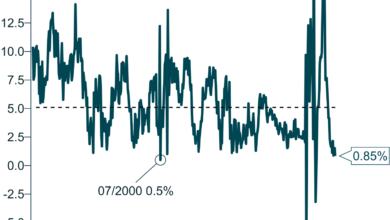Increasing disability employment could boost Australian economy by billions

A new report by the Bankwest Curtin Economics Center at Curtin University reveals that there has been no improvement in employment rates for people with disability in Australia over the last two decades, despite extensive policy reforms and greatly increased funding for supports and service delivery.
This failure of policy to address labor market exclusion represents a massive loss to the Australian economy, with the report showing that increasing employment of people with disability by 10% could add $16 billion to economic output each year.
The “Employment and Disability in Australia: Improving employment outcomes for people with disability” report offers recommendations aimed at fostering a more inclusive workforce, including implementation of a “work first” approach, enhancing public sector employment initiatives, promoting employer leadership in disability inclusion and improving education-to-work transitions.
The report also recommends the establishment of a National Disability Employment Agency to improve coordination across welfare and disability support agencies and state and federal governments, undertake evaluation and identify best practice, and to provide information and support to businesses seeking to broaden access to meaningful employment for people with disability.
Analyzing data from 1998–2022, the report shows a widening employment gap, including in 2022 when only 53.1% of people with work-limiting disabilities were employed, compared to 81.8% of those without disabilities.
Report co-author and Bankwest Curtin Economics Center Director Professor Alan Duncan said while approximately 4.4 million Australians lived with disability, their participation in the workforce has declined.
“While the economic outcomes would be significant, a focus on this aspect alone risks overlooking the positive impacts and long-term benefits to the health, well-being and life satisfaction of meaningful employment and greater social inclusion for those facing greater life challenges,” Professor Duncan said.
The report also exposes far greater job instability and a higher rate of “churn” in labor market states for people with disability. This includes moving in and out of the labor force altogether, as well as between jobs and unemployment.
“While Australians living with disability generally report a high level of life satisfaction, there is a persistent gap in well-being linked to disability, underscoring the crucial role employment plays in enhancing the sense of well-being for individuals with disability.
“To shift the dial, we advocate for a ‘work first’ approach that starts from the assumption that people with disabilities should be supported to access meaningful work whenever they and their families believe this is appropriate.
“Additionally, the establishment of a National Disability Employment Agency is recommended to streamline efforts and enhance coordination across existing welfare and disability support agencies. This agency would play a crucial role in reporting and analyzing disability employment outcomes, evaluating and identifying best practice, and fostering a progressive policy framework to promote workplace inclusion.”
Report co-author Professor Mike Dockery from the Bankwest Curtin Economics Center said that adverse incentives embedded in the existing system of support for people with disabilities have contributed directly to the failure of policy measures to deliver positive employment outcomes.
The current system offers greater rewards to Disability Employment Service providers that offer repeated short-term placements rather than longer term employment outcomes, and places restrictions on hours worked in placements.
“Our analysis shows the NDIS has failed to deliver any discernible improvements in employment outcomes, with currently only around one third of NDIS support plans for working age clients including employment-related goals,” Professor Dockery said.
In the realm of public sector employment, governments at federal and state levels needed to demonstrate leadership by committing to specific targets and reporting requirements for disability employment outcomes.
“The report proposes sharing best practices and case studies among public sector commissions to facilitate knowledge exchange and foster continuous improvement,” Professor Dockery said.
“Similarly, in the community sector, additional funding is suggested to support disability employment outcomes, along with the development of specialist recruitment and transition support services to assist both individuals with disabilities and employers.
“Employer leadership is identified as crucial in advancing disability employment outcomes, with leading companies encouraged to embrace inclusion as a means of promoting organizational culture and values. Recommendations include ensuring representation of lived experience at the board level and engaging industry bodies to support disability inclusion initiatives.”
The report also reveals that having a university degree significantly enhances the likelihood of employment. For people with disability, having a bachelor’s degree increases their chances of finding work by 34.4%, this is 16.2% higher than the 18.2% increase in job chances for people without disability who have a degree.
Education-to-work transitions are highlighted as critical junctures where interventions can significantly impact employment outcomes for individuals with disability.
Key findings and recommendations
- 53.1% of people with a work-limiting disability were in a job in 2022, compared to 81.8% of people without disability or long-term health condition, a gap of 28.6 percentage points. That gap has widened from 27.8 percentage points in 2001.
- Total incidence of disability among working age people (15–69 years) declined from 18.0% in 1998 to 14.4% in 2018.
- People with disability have been consistently 25–30 percentage points less likely to be employed than those without disability over the past two decades.
- For people with disability, having a university degree is associated with an additional 16.2% higher probability of being in work over and above the 18.2% effect observed for people without disability.
- For full-time workers with disability, typically 25% will have left full-time employment one year later, compared to just 10% for full-time workers without disability.
- By industry, the health care and social assistance sector has the largest proportion of people with disability in its workforce (21.7%).
- Agriculture, forestry and fishing has the highest over-representation of workers with disability, at 6.3 percentage points above their overall share in the workforce. Mining has by far the highest under-representation (6.4 percentage points).
- Modeling suggests being a NDIS client reduces a person’s chance of being in employment and reduces their chance of transitioning into work by around seven percentage points.
- 26% of people with disability report transport issues as a barrier to finding work, compared to 16% of jobseekers without disability.
- 35% of caregivers have a work-limiting disability themselves, compared to 15% of people without caring roles.
Provided by Curtin University
Citation:
Increasing disability employment could boost Australian economy by billions (2024, March 12)
retrieved 12 March 2024
from https://sciencex.com/wire-news/471699843/increasing-disability-employment-could-boost-australian-economy.html
This document is subject to copyright. Apart from any fair dealing for the purpose of private study or research, no
part may be reproduced without the written permission. The content is provided for information purposes only.





